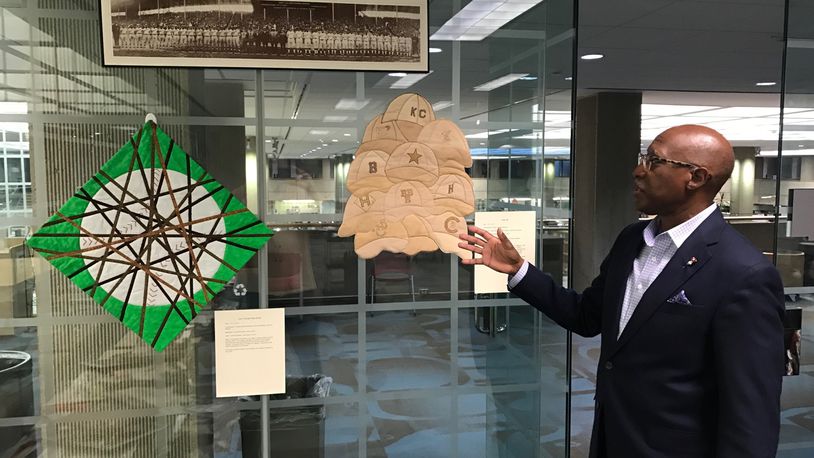Visitors to the Library Loggia at Sinclair are in for an inspiring walk through four centuries of American history. Having welcomed over 500 visitors since last September, “Our American Journey: The Black Experience in America” exhibition is a visceral experience that links often forgotten fragments of America’s past to its present.
With all but a few items on display the property of Michael Carter, Senior Advisor to the President and Chief Diversity Officer, the exhibit forms part of the avid collector’s personal journey to educate people from all walks of life on the African American experience. Nestled along the glass walls of the loggia and told through a diverse range of artifacts is a story lived by Carter’s ancestors as well as men and women across the length and breadth of the United States.
“This is important for a number of reasons, but mainly because most Americans have no knowledge of American history,” Carter said. “This isn’t black history; this is American history and it is important to show the good, the bad, and the ugly.”
Coming face-to-face with Carter’s displays feels like a journey back in time, beginning with baskets made by slaves shortly after arriving in North America and ending with images of some of their most storied descendants. Given the way recent events have exposed the racial fault lines that still scar the country, this exhibition is a timely reminder of the important role knowledge and understanding play in healing the wounds of the past.
“History is closer than it seems than we want to admit,” Carter explains. As a quick glance at some of his segregation-era displays illustrates, many of the most painful episodes in American history happened less than a hundred years ago.
Nowhere is this more evident than along the wall farthest from the door, where Green Books and an authentic KKK robe flank an old typewriter bearing Langston Hughes’ poem “I, Too”’ Reading almost like a lament of America’s past and a paean to its future, it adds further context to the many powerful displays and emotions lurking underneath them.
“This is extremely personal and that is one of the reasons it is so important to me,” Carter said. “Being in this space is almost healing for me. It feels therapeutic, so when I am on campus this is typically where I am.”
“Our American Journey: The Black Experience in America” has so far taught hundreds of visitors about some of the hidden figures that helped shape American history. Men and women like Isaac Woodard, Stagecoach Mary, and Frances Harper all get their due. Through their stories and others like them, visitors can expect to feel empathy for those who suffered, shock at what they endured, and pride in what they were able to achieve.
Ismael Mujahid
Reporter


